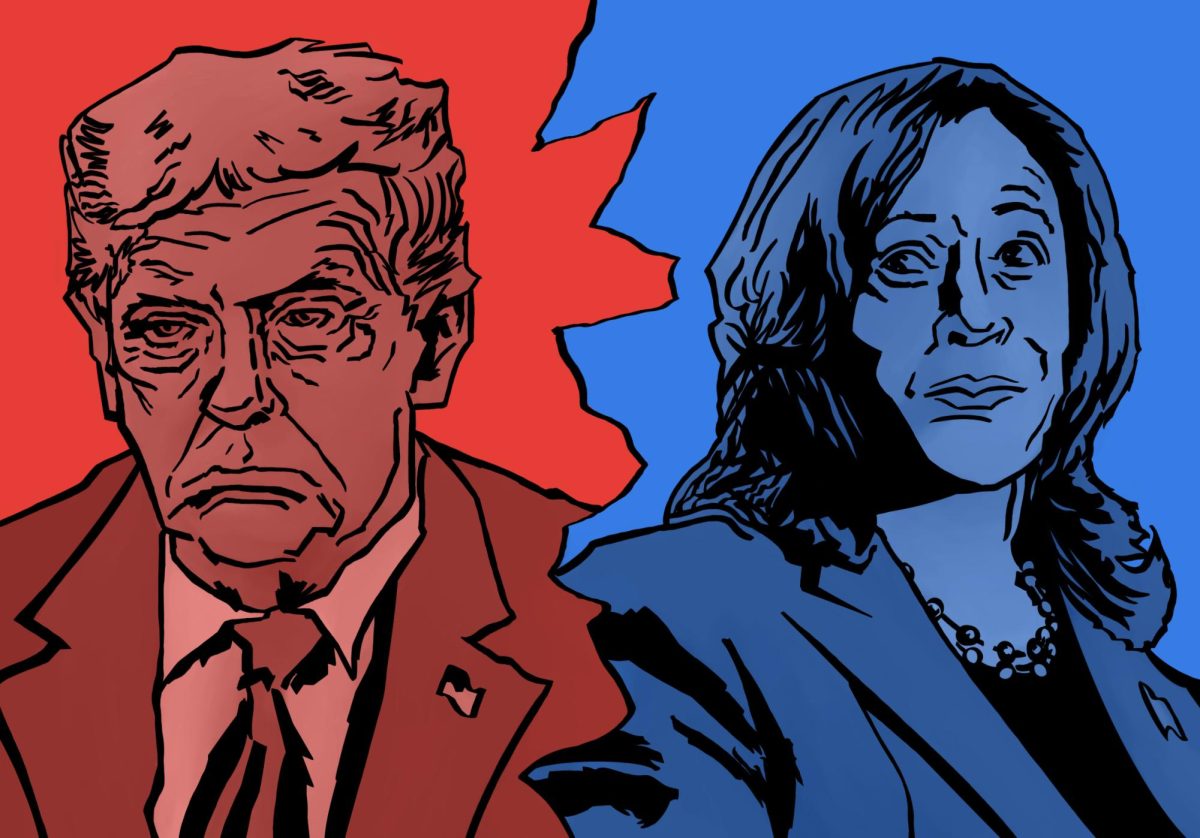Nov. 5 is Election Day in the United States, and we at the Arts Desk implore you to vote. Politics and art have always been intrinsically intertwined and oftentimes ignite each other — some of the first photographs of American history are from the Civil War. Even today, graphic art centralizes political campaigns — like a certain shade of red on a baseball cap, or pop art in the shades of the American flag. These are some favorites of political media that will get you into the mood for the season.
Click here to learn more about how you can vote at NYU. You’ll even get a cool sticker.
“The Lighthouse” by Stevie Nicks
Fleetwood Mac powerhouse Stevie Nicks wrote “The Lighthouse” in 2022 after Roe v. Wade was overturned. The protest rock ballad is rousing, and provides a certain kind of insight that can only come from a woman who’s been fighting for feminist movements for decades.
“Try to see the future and get mad,” she pleads, “It’s slipping through your fingers, you don’t have what you had / You don’t have much time to get it back.” There’s a sadness in her voice that lights a fire underneath you. Voting for the presidential election might feel inconsequential, especially if you’re not from a swing state, but women didn’t always have the right to vote. People of color didn’t always have the right to vote. Having the right to vote is a privilege — and your ballot is not just for the presidential election. Research your district, your county and your senator and vote for what you want your future to look like. As Nicks says, “Don’t let them take your power / Don’t leave it alone in the final hours.”
— Julia Diorio, Arts Editor
“Untitled Film Stills” by Cindy Sherman
In a number of photographs taken between 1977 and 1980, artist Cindy Sherman acted as both director and subject. Donning a variety of wigs and costumes, she portrays women of different female stereotypes and archetypes, chameleon-like, through more than seventy cinematic shots. Throughout the collection, hints of Sherman’s overarching control over her narratives — such as a hand discreetly poised on a button connected by wire to her camera’s capture — are indicative of an agency that is instilled in her and in all of us, too. It would do us all well to remember that while the election process can seem nebulous and out of our control, we can remind ourselves of our potential for influence. Vote, encourage your friends and family to vote and keep an eye on the numbers this Election Day.
— Eleanor Jacobs, Music Editor
“Bob Roberts” (1992)
It’s hard to find a worse candidate for the Senate than Tim Robbins’ Bob Roberts, a folk musician and so-called populist from Pennsylvania. His platform consists of his hyper-conservative, Bob Dylan-parody songs, like “Times Are Changin’ Back” or “Retake America,” where he spews his hatred for socialism and idealizes division among every possible demographic. In this mockumentary shot by British documentarian Terry Manchester (Brian Murray), we see Bob launch a smear campaign against incumbent Brickley Paiste (Gore Vidal) by claiming he dates underaged girls, spews homophobic rhetoric from inside his campaign bus and dodges muckraker Bugs Raplin (Giancarlo Esposito) — who threatens to expose ties between Bob’s anti-drug charity Broken Dove and a CIA drug-trafficking scheme. But these scandals aren’t enough to interfere with Bob’s bid for office — after staging an assassination attempt, he rouses his Pennsylvanian voters and secures the election. There’s a discomfort with how reminiscent “Bob Roberts” is of certain contemporary campaigns and federal politicians. In fact, Robbins himself vowed to never release the soundtrack in fear of one day hearing it on the radio or linked to a real-life election. He was inspired by the George H.W. Bush administration’s early conservatism and there’s no better time to watch “Bob Roberts” than today.
We may not be able to stop Bob Roberts from accepting the Senate seat, but we can vote for the future of our own government and ensure that we never see a doppelganger of his release a “Wall Street Rap” of their own.
— Dani Biondi, Film & TV Editor
“The Handmaid’s Tale” by Margaret Atwood
The dystopian world in “The Handmaid’s Tale,” by Margaret Atwood, and our modern society continue to eerily converge. In the Republic of Gilead, a totalitarian society that has replaced the United States, the Handmaids’ purpose is to bear children for the elite. The book focuses on one of the Handmaids, Offred, who hopes to become pregnant with one of the political leaders’ babies. She is valued for her ability to reproduce and help with the society’s declining birth rate. The Handmaids are forbidden to read, stripping them of their access to knowledge. The book explores a society in which women’s reproductive rights are completely controlled by the government. This phenomenon is not far from the reality of many women’s lives today. Atwood’s book holds real-world political implications about the reproductive freedoms that are currently being taken away from women, and reading it might leave you filled with rage. Channel this rage and go vote.
— Siobhán Minerva, Deputy Arts Editor
“We Didn’t Start the Fire” by Billy Joel
That’s all.
— Alexa Donovan, Arts Editor
Contact the Arts desk at [email protected].


























































































































































